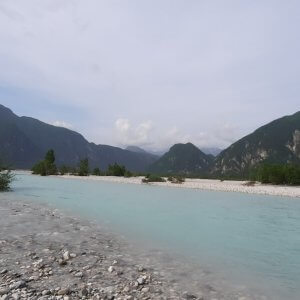Have you ever wondered how can ancient climates be studied if temperature records only go back about 300 years?1 To find out what the climate was like before then, we need to reconstruct it. This is usually done by a paleoclimatologist using a technique called ‘climate reconstruction’2. Paleoclimatology, the study of past climates, is a discipline in its own right, but climate reconstruction typically involves interdisciplinary collaboration between scientists from various fields. Methods such as dendrochronology and ice core drilling are used to determine what the climate was like in the past. Ultimately, they use all available information to solve the puzzle. Solving this puzzle helps us to understand not only past climate variability, but also current and future climate change.
Nature as a climate witness:
Hints on earth’s past climate are hidden everywhere, we just have to know how to find and interpret them. Some of the most fascinating sources used for climate reconstruction come from the most unexpected sources. Tree rings and ice cores are natural archives which can store historical climate patterns in the form of different physical characteristics. By analysing those physical properties scientists can unveil temperature shifts, precipitation levels and atmospheric conditions. Tree rings show us annual growth trends influenced by climate while ice traps tiny air bubbles that capture the atmospheric conditions of the earth’s past. When taking a deeper look at nature, we can find many more proxies usable for climatic reconstructions. Marine sediments, fossils, lichens, glacial features like moraines, and sedimented pollen are only a few further examples.
The fact is that if you really want to use natural sources for climate reconstruction, you have to think outside the box and delve deeper. Using annual growth trends or ice cores as climate proxies may sound straightforward, but it’s more complex than you might think.
Let me briefly introduce you to the science behind these ice cores. As well as analysing the content of past greenhouse gases, ice cores provide layers that can be examined. Similar to tree rings, these are formed by seasonal differences in temperature or extraordinary events such as volcanic eruptions. These boundaries are clearly visible in the upper layers and can be used to determine the age of the ice. The thickness of these layers can tell us about precipitation rates and temperature, which are important climate indicators. With the help of geochemists, even deeper ice sheets can be studied. Different oxygen and hydrogen isotopes transfer climatic information.

Figure 1: An ice core drilled from the West Antarctic Ice Sheet Divide project, containing a dark layer of deposited volcanic ash Credit: H. Roop, National Science Foundation
Three common isotopes are found in Antarctic ice: H₂¹⁶O, which makes up almost 99.7% of the precipitated snow, and two rarer ones: H₂¹⁸O and D₂¹⁶O. Changes in the concentration of these isotopes indicate changes in temperature because the proportion of H₂¹⁸O and D₂¹⁶O is linearly and consistently related to temperature in Antarctica. During colder periods, the H₂¹⁶O content of ice is higher. As the climate warms, the proportion of H₂¹⁸O in Antarctic ice cores and the proportion of H₂¹⁶O in oceans increases. The same reasoning can therefore be applied to the analysis of foraminifera, which are shelled microorganisms which trap oxygen in their shells as they form.
- Disclaimer: This blog entry is the first part of the A Journey Through Time series. ↩︎
- Image taken from: https://www.ncei.noaa.gov/news/what-are-proxy-data ↩︎
I was born in Luxembourg and raised in the Müllerthal region. The region's fascinating natural landscapes sparked my interest in environmental sciences at an early age. This led me to study Geography in Innsbruck, where I specialized in physical geography and enjoyed the beauty of the Alps. After completing my B.Sc., I moved to Bayreuth to continue with a Master's in Environmental Geography, where I am particularly interested in the impacts of climate change on the environment and ecosystems.










